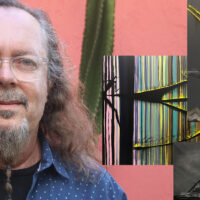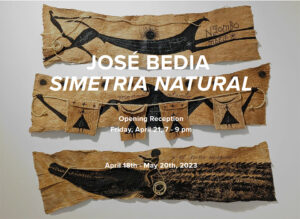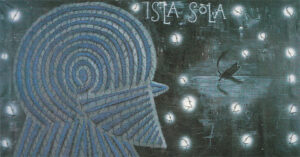Artist José Bedia

JOSÉ BEDIA (b.1959) was born and grew up in Havana, Cuba.
From an early age, Bedia excelled in drawing, comics, and illustration. He joined the famous San Alejandro Academy when he was a teenager. A well-known drawing from those early years at the academy came to define Bedia’s sense of himself as an artist: A perfectionist academic portrait, with an elongated style, portraying an Amerindian of the primitive tribes of the United States of America. In the portrait, the protagonist, an Indian figure riding a horse while shooting a gun, is aiming backwards, as if turning his back towards the viewer. When the art teacher asked Bedia why he drew the Indian in such a manner, his response reflected his rebellious dissident ideology: “Because I’m on his side, the enemy is on the other side, so you can totally trust me.”
After San Alejandro, Bedia graduated with honors from the ISA Instituto Superior de Arte de la Habana, Cuba
Bedia was a pioneer of the radical transformation of Cuban Art and played an integral part in the ground-breaking 1981 exhibition, “Volumen Uno.” His passion for the primal Amerindians complemented his anthropological studies of Afro-Transatlantic cultures, which included in-depth studies of the faith, beliefs, and religion of the “La Regla Kongo” (in which he was initiated in 1983), the “Regla de Ocha,” and the Leopard Society of Abakuas, among many others.
Bedia traveled to Angola as part of the International Cultural Brigades that supported the struggle of the Angolan-Cuban War against Namibia and South Africa, which increased his interest in the African roots of American culture. This interest also inspired to visit countries such as Peru, Mexico, Haiti, the Dominican Republic, Puerto Rico, Zambia, Botswana, Kenya, and Tanzania. After residing in Mexico, he moved to Miami Florida, where he currently lives.
Bedia is a decisive and precise draftsman, with a striking pictorial capacity, known for his enigmatic and enveloping installations. In his work, he seeks to highlight how cultural heritage influences our daily lives, and he incorporates “storytelling,” what he calls informative lessons about the cosmogonic Universes of the ancestral cultures and their influence. His work has been exhibited in Havana, Sao Paulo, Venice, and Beijing Biennales, where he has received numerous awards and acclamations. His work can be found in both private and public collections, including the Museo Nacional Palacio de Bellas Artes (Havana), the Museum of Modern Art (NYC), the Metropolitan Museum (NYC), the Whitney Museum of American Art (NYC), the Guggenheim (NYC), Tate Modern (Londo), the Smithsonian American Art Museum (Washington), the Colección Daros (Zurich), and the Pérez Art Museum Miami, among many others.
— Adapted from https://josebedia.com/
The videos below are organized by Success Factor, and run between 30 seconds and 5 minutes. Click on any video. You must be connected to the Internet to view the videos.
CRITICAL THINKING: 1:57 min.
CREATES A UNIQUE PERSONAL BRAND: 1:35 min.
INSIGHT & INSPIRATION: 0:39 sec.
CREATIVE FLEXIBILITY: 1:43 min.
INSIGHT & INSPIRATION: 1:17 min.
OVERCOMES CHALLENGES TO SUCCEED: 0:54 sec.
DEVELOP A VOICE: 1:08 min.
DEVELOP A VOICE: 0:46 sec.
SERENDIPITY: 0:39 sec.
CREATES A UNIQUE PERSONAL BRAND: 1:08 min
SELF-CONFIDENCE: 0:33 sec.
OVERCOMES CHALLENGES TO SUCCEED: 0:57 sec.
VALUES FIRST-RATE EDUCATION: 0:35 sec.
CREATES A UNIQUE PERSONAL BRAND: 1:44 min
INSIGHT & INSPIRATION: 1:21 min.
COMPULSION: 0:27 sec.
OVERCOMES CHALLENGES TO SUCCEED: 1:24 min
CREATIVE FLEXIBILITY: 0:56 sec.
COMMUNITY VALUES: 0:51 sec.
UNDERSTANDS ARTISTS’ NEEDS: 0:58 sec.
INSIGHT & INSPIRATION: 2:35 min.



